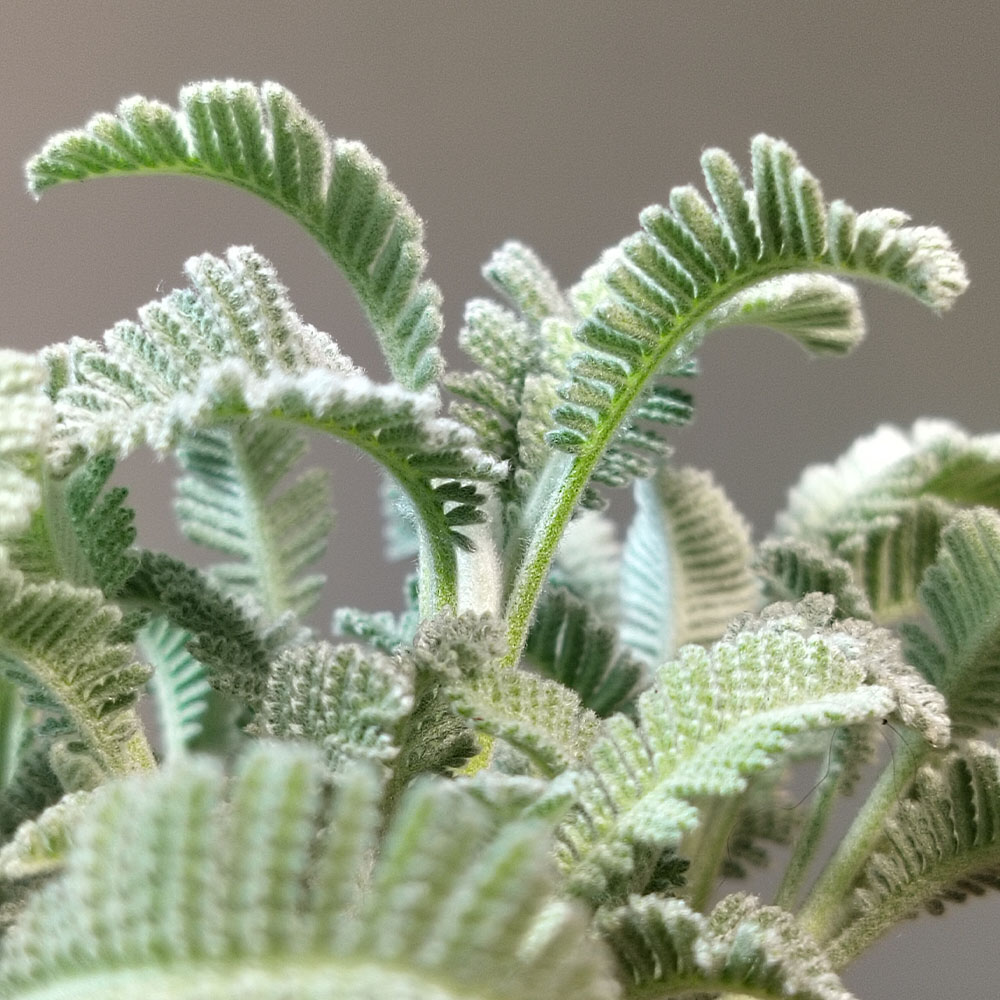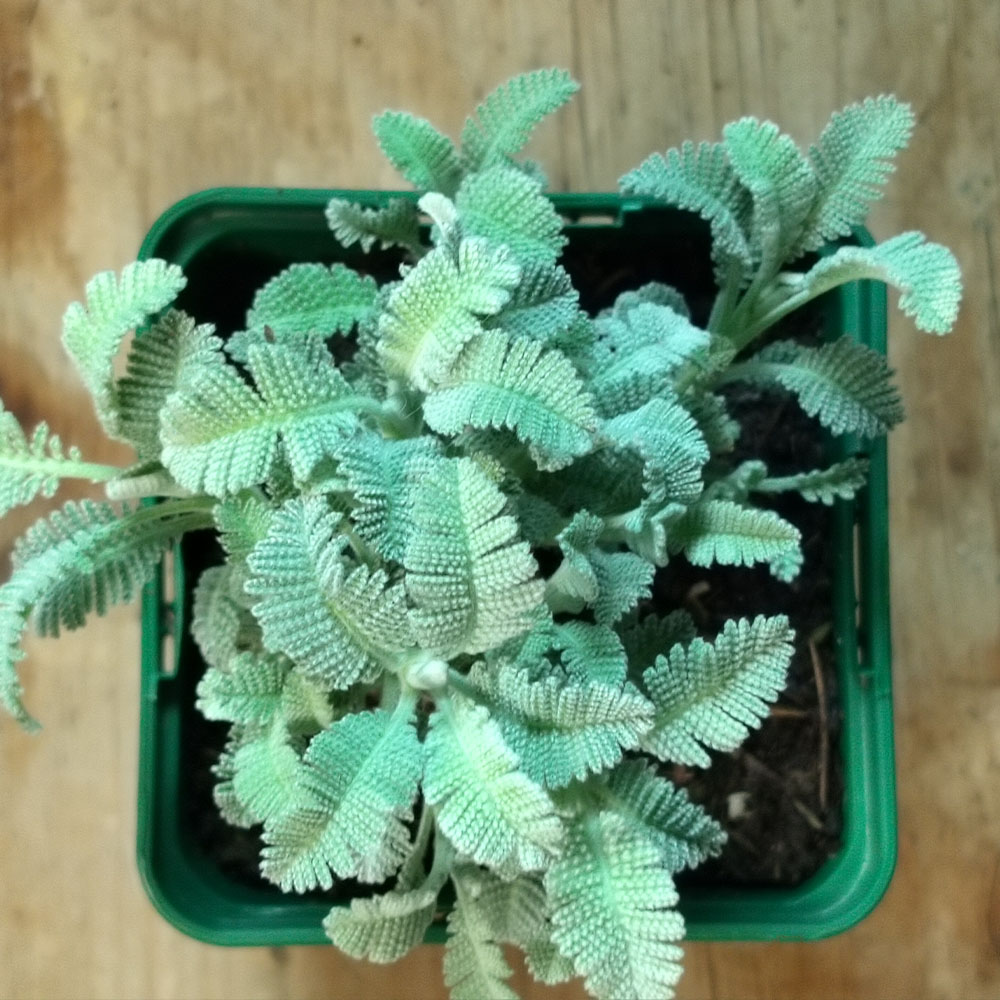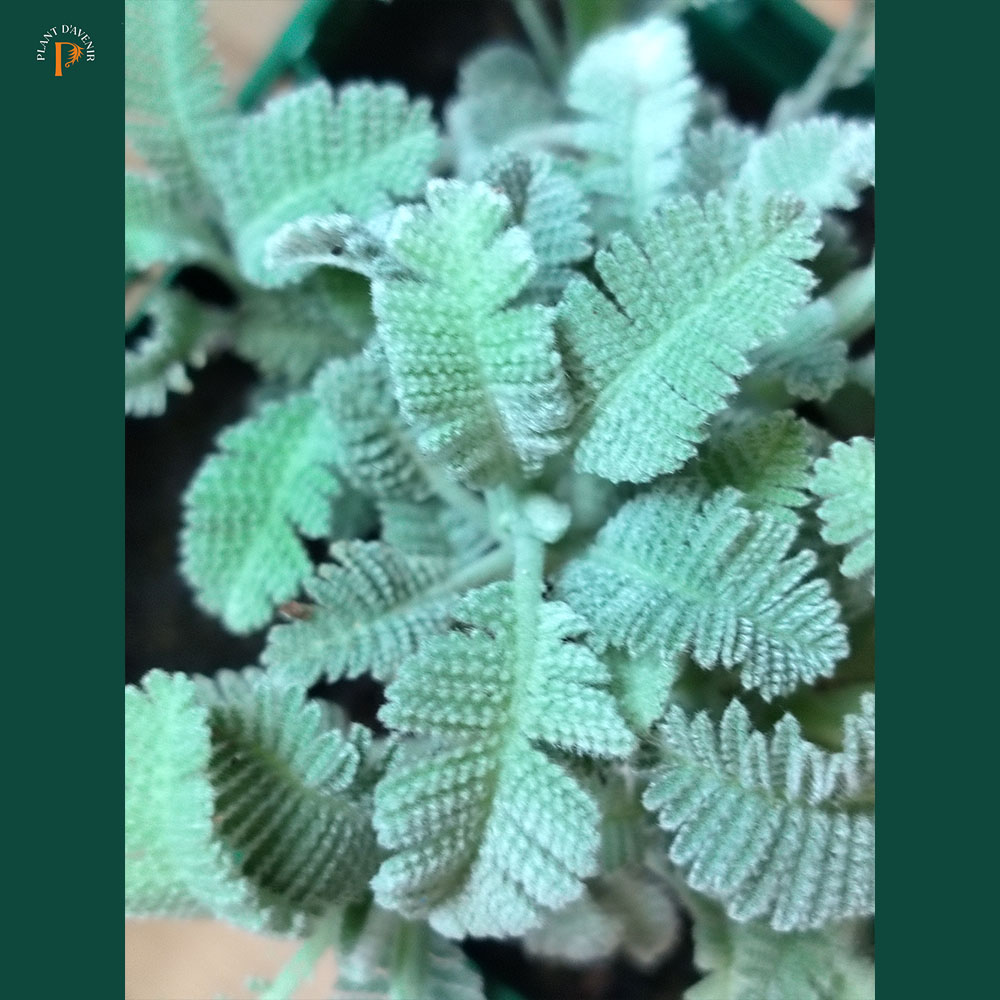No products in the cart.
Tanacetum densum subsp amani
A shrublet composed of soft, finely divided silvery gray-white leaves.
Rated 0 out of 5
0 customer reviews
4,90 € – 12,00 €Price range: 4,90 € through 12,00 €
SKU: pda214
Category: Balcony-Friendly, Bees and Butterflies, Evergreen, Frost Hardy, Grey Ladies, Ground Cover, Rewild

Tanacetum densum subsp amani
4,90 € – 12,00 €Price range: 4,90 € through 12,00 €
Tanacetum densum subsp amani is a low growing shrublet ( a shrublet!) that forms a dense mat of soft, finely divided silvery gray-white leaves.
Commonly known as Partridge Feather, is celebrated for its striking silvery foliage and compact, mound-forming habit, making it an excellent choice for dry, sunny gardens.
The leaves of Tanacetum densum subsp amani are silvery-grey, giving the plant a bright, reflective appearance in direct sunlight.
They are finely divided and feathery, with each leaflet narrow and linear, edged with very fine serrations, which is why they are often described as “fine-toothed.”
The leaf surface is covered with tiny hairs, or pubescence, which not only creates the silvery coloration but also helps reduce water loss and protect the plant from heat stress in its native rocky habitats.
The foliage forms dense, low mounds, with leaves radiating from the base in rosettes or along short stems, creating a compact and evergreen cushion of feathery texture. They honestly resemble soft, magical, silver flowers.
This combination of delicate dissection, soft pubescence, and muted grey tone makes the leaves both functional in their natural environment and highly ornamental in gardens.
The Tanacetum densum subsp amani flowers are small and yellow, are largely insignificant compared to the foliage of this variation.
👨🌾 GARDENING TIPS 👨🌾: Tanacetum densum subsp amani
-
- Regular pruning of spent flowers encourages bushy growth and new flowers
- Don’t eat at all
- Full sun and well-drained soil
- Not prone to aggressive spreading.
👩🍳 COOKING AND DYING TIPS 👩🍳
Tanacetum densum subsp amani is not culinary, not medicinal, nor aromatic.
If you are looking for the other Tansies, here they are!
Culinary flavoring of bitters, liqueurs, or herbal teas (in very small amounts).
-
-
- Tanacetum balsamita– Leaves have a strong, aromatic scent reminiscent of mint.
- Tanacetum vulgare – add to liqueurs but sparingly
-
Folk medicine for digestive, menstrual, and parasitic ailments.
- Tanacetum parthenium – used historically for cramps/migraine prevention because the leaves contain parthenolide (cultivars should be avoided as they have been meddled with by too many humans > go for the botanical variety)
-
Dyeing: yellow and green tones can be obtained from leaves and flowers, sometimes enhanced with mordants like alum or iron salts.
- Tanacetum vulgare – produces a strong yellow to greenish-yellow dye
-
Learn more about dying with Tansy:
The Tales & The Botany : Tanacetum densum subsp amani
“Athanatos” means long-lasting or immortal in Greek, a reference to the long lasting dried flowers of the Tanacetum vulgare – whose flowers were placed on tombstones in Ancient Greece.
The specific epithet means “dense-growing” , from the Amanus mountain range of Adana Province in Anatolia.
There has been some botanical and human confusion between Tanacetum densum subsp amani and Tanacetum haradjanii .
Many of the Tanacetum densum subsp amani are sold as haradjanii but that is not who they actually are.
The true Tanacetum haradjanii have very fine, lacy leaves – resembling those of Artemisia camphorata.
🌸 Floral Morphology
The flowers of Tanacetum species are typically small, tightly clustered, and range in color from bright yellow to pale cream or white.
They are usually daisy-like or button-shaped, forming flat-topped inflorescences that attract pollinators such as bees, butterflies, and flies.
Fruits are usually small achenes that are easily dispersed by wind.
Leaves are often pinnately divided, fern-like, and aromatic when crushed. Their fine texture contrasts beautifully with the dense flower clusters.
Stems can be erect or spreading, depending on the species, and many Tanacetum plants spread via rhizomes, forming clumps or colonies in suitable habitats.
🌱 Reproductive Biology
Tanacetum species reproduce sexually via seeds and vegetatively via rhizomes. Flowers are usually insect-pollinated, supporting local pollinator populations.
Seed germination varies by species but generally occurs in spring, while rhizomatous growth allows rapid colonization of suitable habitats.
Most species are perennial and hardy in temperate climates, tolerating moderate drought once established.
From a botanical standpoint, the Tanacetum genus offers an intriguing mix of ornamental beauty, chemical utility, and historical significance.
Its diverse species connect horticulture, ethnobotany, and natural dyeing traditions, demonstrating the genus’s long-standing relationship with humans.
Other Names:
Partridge Feather
Origine:
Mountains of Turkey/Syria
| Weight | 0,5 kg |
|---|---|
| Container Size | 9×9 cm, 1L, 2L |
| Flowering | May, June, July |
| Soil | Dry |
| Exposure | Full Sun |
| Frost Tolerance | -10°C to -15°C |
| Size | 0.35m H x 0.4m W |
Reviews
0
Rated 0 out of 5
0 customer reviews
5
0
4
0
3
0
2
0
1
0
Only logged in customers who have purchased this product may leave a review.
Related Products
Hieracium maculatum Leopard
A native perennial with blue-green leaves and a tall yellow flower
A native perennial with blue-green leaves and a tall yellow flower
Rated 0 out of 5
Tradescantia Blushing Bride
Gorgeous blushes of pink and white that appear in the coldest nights.
Gorgeous blushes of pink and white that appear in the coldest nights.
Rated 0 out of 5
Sedum album
A low, multi-color ground cover.
A low, multi-color ground cover.
Rated 0 out of 5
Potentilla anserina
A distinctly silvery, silky and lacy perennial.
A distinctly silvery, silky and lacy perennial.
Rated 0 out of 5
Delosperma cooperi
A dwarf perennial known for its vermillion colored flowers
A dwarf perennial known for its vermillion colored flowers
Rated 0 out of 5
Cerastium tomentosum var. columnae
A grey-green spreading ground cover from the mountains.
A grey-green spreading ground cover from the mountains.
Rated 0 out of 5
Euphorbia cyparissias Clarice Howard
A Euphorbia that resembles a soft little cyprus tree
A Euphorbia that resembles a soft little cyprus tree
Rated 0 out of 5
Echinacea purpurea
A perennial with purple flowers all summer long
A perennial with purple flowers all summer long
Rated 0 out of 5
Euphorbia myrsinites
Known for its draping form of silver-gray foliage and radiant blooms.
Known for its draping form of silver-gray foliage and radiant blooms.
Rated 0 out of 5
Vinca minor
Looping elegance and ability to form a low flowering ground cover
Looping elegance and ability to form a low flowering ground cover
Rated 0 out of 5
Trachelospermum asiaticum ‘Ogon Nishiki’
Jasmine with colorful foliage and lovely white flowers in summer
Jasmine with colorful foliage and lovely white flowers in summer
Rated 0 out of 5
Artemisia Valerie Finnis
A semi-evergreen, aromatic variation on the theme of Artemisia.
A semi-evergreen, aromatic variation on the theme of Artemisia.
Rated 0 out of 5
Kalanchoe daigremontiana
A toothy succulent from Madagascar, known as the Mother of Thousands.
A toothy succulent from Madagascar, known as the Mother of Thousands.
Rated 0 out of 5
Melissa officinalis
A perennial plant in the mint family that is adored by bees, royal families and tea drinkers.
A perennial plant in the mint family that is adored by bees, royal families and tea drinkers.
Rated 0 out of 5
Mentha x piperita ‘Chartreuse’
A spicy mint, known for its use in the production of liqueurs and herbal teas.
A spicy mint, known for its use in the production of liqueurs and herbal teas.
Rated 0 out of 5
Erigeron kavinskianus
A daisy-like carpet of flowers
A daisy-like carpet of flowers
Rated 0 out of 5
Glechoma hederacea
A sweet smelling ground cover, producing little blue flowers all summer long.
A sweet smelling ground cover, producing little blue flowers all summer long.
Rated 0 out of 5
Hellebore argutifolius
Winter flowering perennial with marbled blue-green leaves
Winter flowering perennial with marbled blue-green leaves
Rated 0 out of 5
recent view product
Anthemis tinctoria E.C. Buxton
Lemon yellow daisies atop soft, ferny leaves
Lemon yellow daisies atop soft, ferny leaves
Rated 0 out of 5
Brachyglottis greyi
Soft grey velvety velvety bush covered in bright yellow daisy flowers
Soft grey velvety velvety bush covered in bright yellow daisy flowers
Rated 0 out of 5
Helenium Flammendes Katchen
A perennial with fire colored flowers all summer long
A perennial with fire colored flowers all summer long
Rated 0 out of 5
Nigella damascena
Delicate blue flowers surrounded by a green mist of lacy feathers for most of the summer.
Delicate blue flowers surrounded by a green mist of lacy feathers for most of the summer.
Rated 0 out of 5
Sedum Matrona
Big round leaves and soft pastel-pink flowers on long purple stems that flower for months.
Big round leaves and soft pastel-pink flowers on long purple stems that flower for months.
Rated 0 out of 5




















































There are no reviews yet.